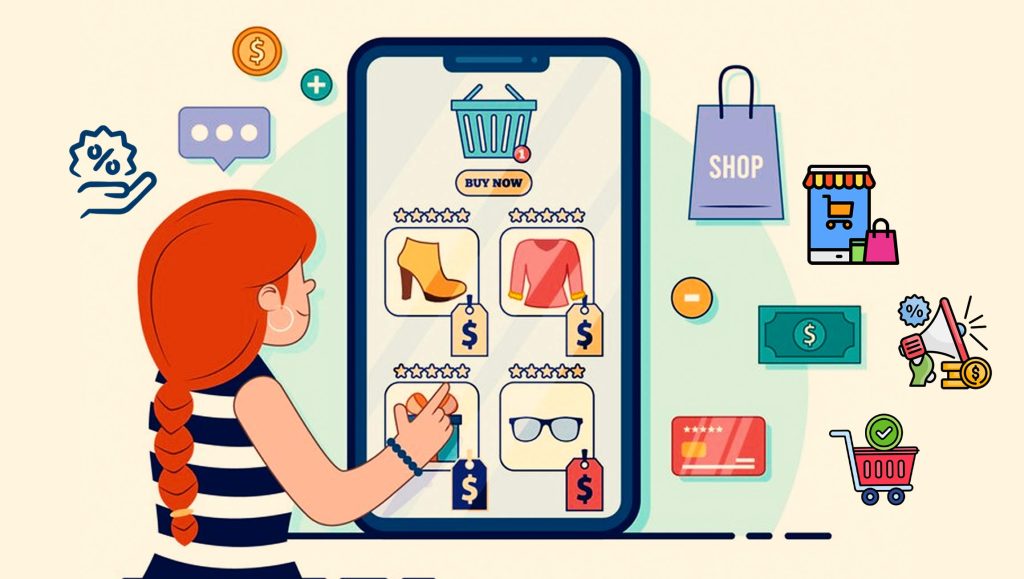With the total m-commerce sales expected to surpass $3.4 trillion by 2027, businesses can no longer ignore this rapidly growing channel. The widespread use of smartphones and their convenience has led more consumers to shop via mobile devices. This change in consumer habits brings both opportunities and challenges for businesses.
On one hand, it opens a new avenue to reach and engage customers. On the other, it necessitates a rethinking of traditional business models and strategies. Organizations must now focus on optimizing the mobile shopping experience, from ensuring responsive design to streamlining checkout processes. As mobile shopping gains popularity, businesses that adapt and innovate will be well-equipped to succeed in this evolving retail environment.
Why Businesses Must Prioritize Enhancing Mobile Shopping Experiences?
A seamless and engaging mobile shopping experience can considerably boost customer satisfaction, ensuring improved brand loyalty and repeat purchases. Moreover, it can help enterprises reach a wider audience, thereby boosting sales and revenue.
However, creating such an experience requires a thoughtful approach that considers various aspects, from responsive design and streamlined checkout processes to personalized offers and promotions.
Companies that fail to invest in improving their mobile shopping experiences risk losing out to competitors who do. Therefore, enterprises must stay ahead of the curve by continually innovating and optimizing their mobile shopping experiences.
Top Five Strategies to Improve the Mobile Shopping Journey
In the era of mobile commerce, providing an exceptional mobile shopping experience is paramount. Here are five techniques that brands can use to achieve this goal:
1. Responsive Design:
A responsive website adjusts by itself as per the screen size of the device being used. This assumes greater importance as consumers use a variety of devices to shop online. Such a design ensures a consistent shopping experience across different screens, enhancing usability and customer satisfaction.
2. Streamlined Checkout Process:
It is important to simplify the checkout process by minimizing the number of steps and asking only for essential information. Additionally, offering multiple payment options can cater to different customer preferences, further enhancing the user experience and reducing cart abandonment rates.
3. Fast Loading Speed:
Improve your website’s loading time by compressing images, utilizing caching techniques, and reducing the use of heavy scripts and plugins. A quick-loading website enhances the user experience and can positively impact search engine rankings.
4. Personalized Content:
Utilize data analytics to understand customer preferences and behaviors, allowing you to offer personalized content and suggestions. This can significantly improve the shopping experience, boost customer engagement, and increase conversion rates.
5. Easy Navigation:
Ensure that it is simple for users to find what they’re looking for by implementing intuitive navigation and search functionality. This includes having a clear and concise menu, a search bar, and well-organized product categories. A user-friendly site encourages customers to spend more time browsing, thereby boosting the likelihood of a purchase.
Read More: SalesTechStar Interview with Carly Crittenden, Head of Sales at Black Crow AI
Strategies for Crafting Mobile-Specific Offers and Promotions
In the mobile-first world, creating exclusive offers and promotions for mobile users is a powerful strategy to drive engagement and sales. Here are six tips to help you craft effective mobile-specific promotions:
1. Mobile-Only Discounts:
Offering discounts that are exclusively available on your mobile platform can incentivize users to shop using their mobile devices. This strategy can help drive mobile traffic and increase mobile sales.
2. Location-Based Offers:
By leveraging geolocation technology, you can provide offers that are tailored to the user’s location. This can create a highly personalized shopping experience and potentially drive foot traffic to your physical stores.
3. Time-Limited Promotions:
Creating a sense of urgency with time-limited promotions can encourage immediate purchases. This strategy can be extremely useful in improving conversion rates and boosting sales.
4. Push Notifications:
Using push notifications to alert users about special offers can be an effective way to engage users. However, it’s important to ensure these notifications are personalized and relevant to the user to increase engagement and avoid annoying users.
5. Loyalty Rewards:
Rewarding loyal customers with exclusive mobile-only rewards is a good strategy. It can help improve customer retention and encourage repeat purchases. This strategy can help build a loyal customer base and increase customer lifetime value.
6. Easy Redemption:
Making it easy for users to redeem offers is crucial. A complicated redemption process can deter users from taking advantage of the promotion. Therefore, it’s important to ensure the redemption process is as straightforward as possible.
Conclusion
The continuous evolution of technology, coupled with changing consumer behaviors, will drive further innovations in this space. Businesses that closely follow these trends and invest in enhancing their mobile shopping experiences will be well-positioned to thrive. From leveraging data analytics to creating personalized offers, the strategies outlined here can help organizations navigate this dynamic landscape. As mobile continues to redefine the shopping experience, the enterprises that adapt, innovate, and put their customers first will lead the way.
Read More: Impact of Sales Automation on Sales Team Dynamics





















